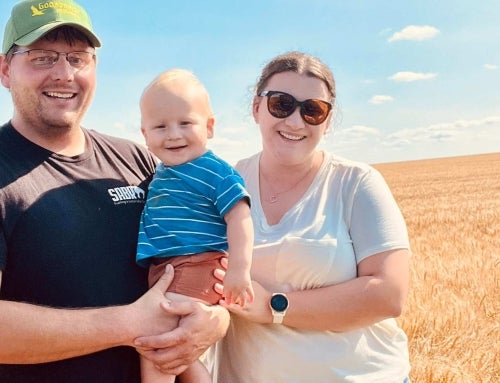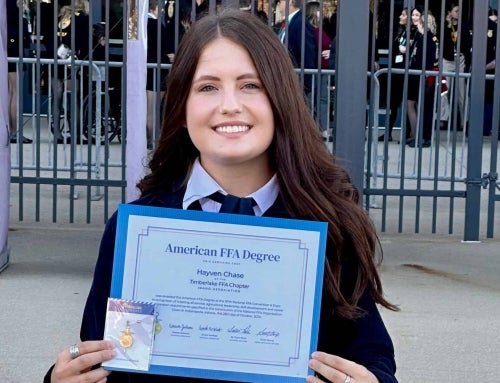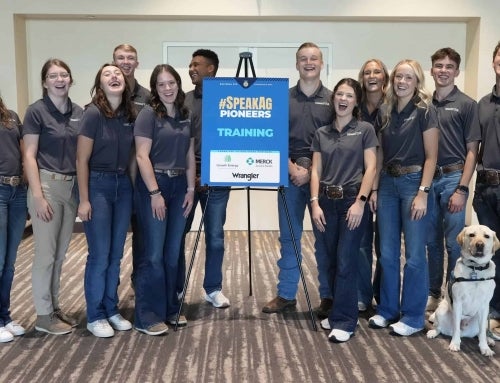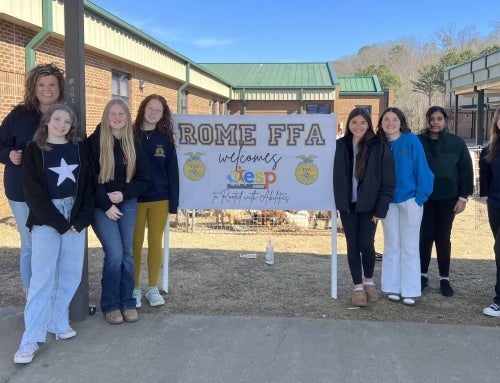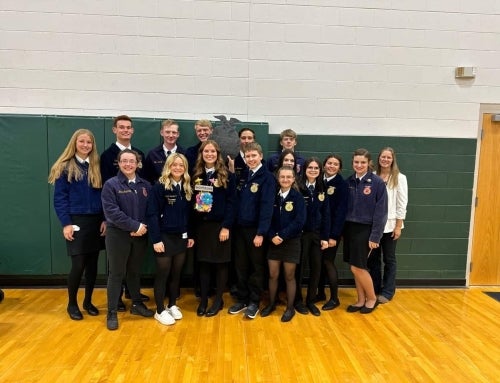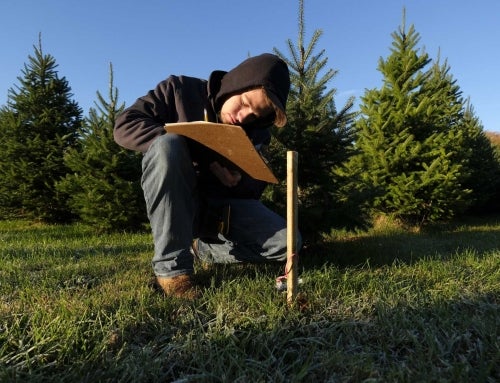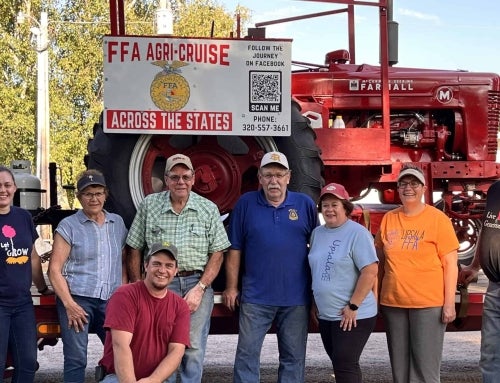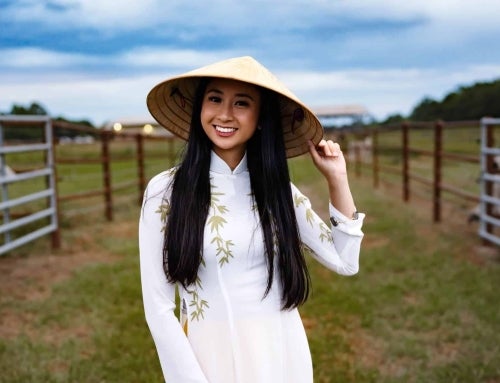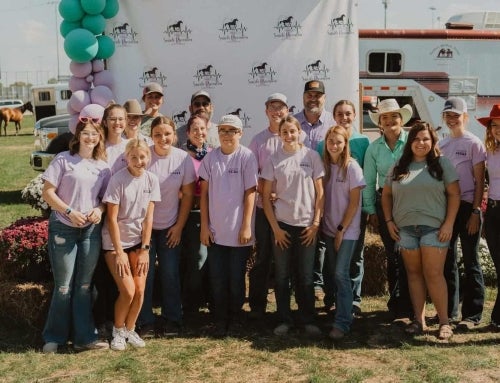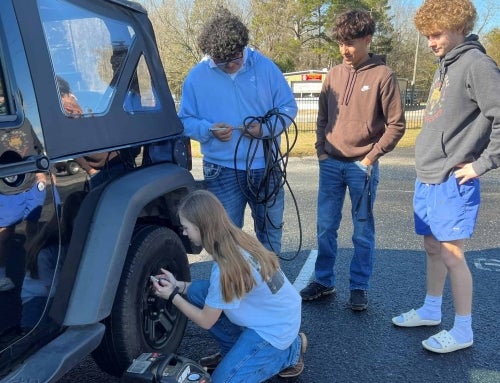Some students spend as many as 2½ hours each morning and afternoon riding the bus to attend Bristol County Agricultural High School in Dighton, Mass. — commonly referred to as Bristol Aggie.
“It’s incredible how far they’re willing to travel to come here and spend their days with us,” says Leslie Blanchette, chair of the Bristol Aggie Animal Science Department and Bristol County FFA advisor.
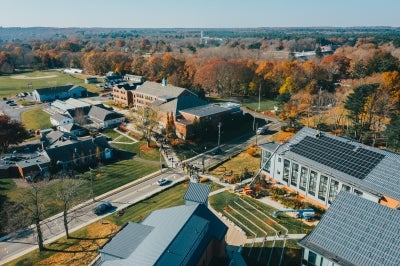
In 2022, Bristol County Agricultural High School underwent a $105 million expansion. The 220-acre campus is nestled near the Taunton River.
Students come for hands-on education, adds Blanchette, a 1995 alum of the school. Bristol Aggie is one of only five agricultural high schools in the country, according to Blueprint magazine. Three of them are in Massachusetts.
When the Massachusetts Legislature started Bristol Aggie in 1912, it was an all-boys farm school. Boys moved to the campus to learn how to become better farmers. In early spring through summer, they returned to their family farms to practice what they learned. Girls joined in the 1960s, although the first female student, Elizabeth Bowen, attended in 1936.
Today, Bristol Aggie sits on more than 220 acres along the Taunton River and offers seven majors: agricultural mechanics, animal science, arboriculture, floriculture, landscape design and contracting, natural resource management and environmental engineering. Each student becomes an FFA member and selects a major in the fourth term of their freshman year, after exploring each option. Half their days are spent studying academics. The other half is focused on vocational training — in and outside the classroom.
To get into Bristol Aggie, students participate in a competitive application process. They come from more than 16 towns and four cities in Bristol County as well as up to 16 out-of-county districts each year, and their agricultural backgrounds vary. One student may have grown up on a 1,000-cow dairy farm, while another lives in a third-floor apartment and hasn’t seen a cow until arriving at Bristol Aggie.
Here are three of their stories.
Connecting Animal Science to Human Health
Julianna Dufresne enjoys watching the different personalities of the rats, mice, rabbits, guinea pigs and birds she cares for as a senior animal science major. The Bristol County FFA president feeds and performs physical exams on small animals as part of the veterinary science and laboratory animal technology concentration, one of four in the animal science department. Last year, she spent time bonding with an African gray parrot named Rocco, who learned voice tricks.
Dufresne also occasionally works with the school’s horses, pigs, sheep and dairy cows in the school’s new robotic dairy barn. She has helped dehorn and vaccinate dairy calves against tetanus, clostridial infections and other diseases.
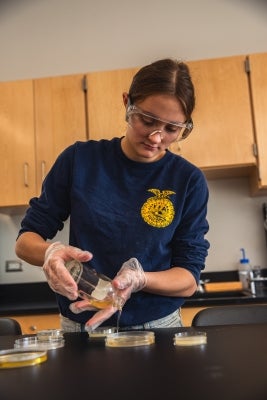
Julianna Dufresne’s senior research project includes examining the effects of disinfectants on microbial growth.
Dufresne’s heart was set on becoming a small-animal veterinarian when she first came to Bristol Aggie. However, her hands-on classes made her realize she wants a career at the intersection of animal science, microbiology and human medicine.
Dufresne plans to pursue a doctorate in virology or immunology, then work for a research company where she can observe the effects of drugs or other human-health treatments on different pathogens in research animals, including mice, rats and primates.
“Microbes fascinate me in a way no other topic ever has,” Dufresne says, recalling the time she and classmates performed fecal smears. They looked under the microscope for parasitic eggs from hookworms, roundworms and tapeworms in fecal samples from their school animals.
She recently prepared a speech for FFA that explores the topic of antibiotic resistance, and she is developing a research project that will observe the effects of different disinfectants on microbial growth.
“Everything I learn here every single day is going to benefit me in some way in my future career,” Dufresne says. “All of this experience has given me confidence with animals. I can handle any mouse, any rat or any bird someone puts in front of me, and I can do it with confidence. That will be huge, especially in a doctorate program.”
Real-World Conservation
Brian Thornhill knew he wanted to be a Bristol Aggie when he was in eighth grade. He had just visited the school’s Natural Resource Management (NRM) Museum during the annual fall show, which draws more than 5,000 visitors each year.
The taxidermy, snake and reptile exhibits were cool, Thornhill says, but he was enthralled by a student showing the differences between two types of arachnids: spiders and harvestmen.
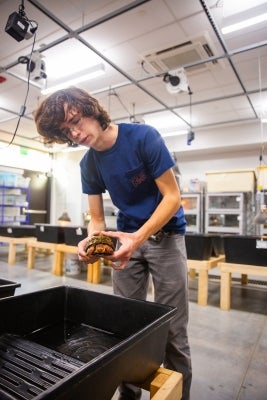
Brian Thornhill helps care for turtle hatchlings raised on campus, some of which are native to Massachusetts and surrounding areas.
“He was explaining those [harvestmen] technically aren’t spiders,” Thornhill recalls. “I love creepy crawlies, and that’s what completely sold me. That’s when I said, ‘I have to go to this school.’”
Thornhill is now a senior NRM major teaching juniors how to run turtle tanks at the museum. As an NRM student, he learns about how ecosystems work and the roles of different groups of animals in them. Students work closely with academic and professional partners, including wildlife biologists at the University of Georgia, the state and federal departments of wildlife and fisheries, and Oxbow Associates, a private company.
Through these partnerships, students receive rare, endangered turtle hatchlings or eggs, which they hatch in school and care for over the winter. They release the turtles into their natural habitat in the spring, with hopes of boosting populations.
Recently, the students have begun monitoring red herring populations in the Taunton River, which runs alongside the campus. They learn how to keep their lab environments biosecure and to present their findings professionally at scientific conferences.
Thornhill wants to “keep doing NRM things” in the future, perhaps teaching at a college or working for the state of Massachusetts.
“I think this is definitely laying the foundation,” he says.
In the Trees
Brody Del Deo felt nervous climbing his first tree as a sophomore. He had learned proper safety protocols. He was hooked into a harness. But it was the encouragement from his classmates and instructors that helped him overcome his fear of heights.
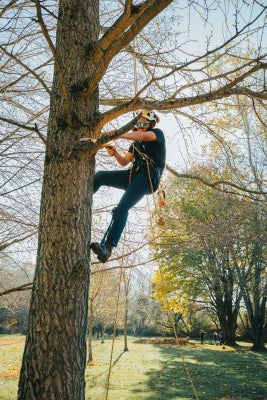
In his program, Brody Del Deo has gained skills such as tree identification, pruning, removal and climbing.
As a senior arboriculture major, Del Deo now considers tree climbing one of the best parts of school. He and his classmates learn how to diagnose diseases and other issues in trees and how to make them more aesthetically pleasing. Then they practice pruning, planting and, when necessary, removing trees on campus. They learn to use the same tools and equipment, such as chain saws and bucket trucks, as professionals.
“I really like the hands-on work,” Del Deo says. “It helps me learn better than sitting in the classroom.”
When Del Deo transferred into Bristol Aggie, he chose the arboriculture major because he knew he wanted to work outdoors. He already had experience in landscaping, so he decided to try something new.
“Arboriculture opened my eyes,” Del Deo says. “I didn’t realize there were so many opportunities for working outside every day.”
Last spring, Del Deo climbed a Norway maple tree — ascending 30 to 40 feet — to prune it. It was the first time he had done so mostly on his own.
“It showed me how I would be doing it working in the industry,” Del Deo says. He wants to jump right into production arboriculture after high school.
The hands-on education at Bristol Aggie is beneficial, he adds, but the best part is the community.
“You find a group of people who share similar interests,” he says. “It makes coming to school enjoyable every day.”
More Space to Learn
Bristol County Agricultural High School features 220 acres of learning space, both in the classroom and outside — in barns, pasture, an agricultural mechanics shop, greenhouses, a vet clinic, a museum, the campus grounds and on the Taunton River.
In 2022, the school completed a $105 million expansion that built and/or updated six buildings.
- The new Center for Science and the Environment houses the student-curated Natural Resource Management Museum, specialized biosecure labs and flexible classrooms.
- The new Student Commons features a dining area and a media center.
- Renovations and a small addition to Gilbert Hall include administration offices, classrooms, two gymnasiums and a climbing lab for arboriculture students.
- A new Landscape/Arbor Building.
- A renovated Ag Mechanics Building with welding, diesel mechanics and electricity labs.
- A new Net-Zero Dairy Barn with robotic milking technology.
Sustainable design elements such as composting toilets and vegetative roofs were also incorporated to conserve water and energy. The expansion creates spaces for 640 students to experience hands-on agricultural education, which is up from 450 students in years’ past.


